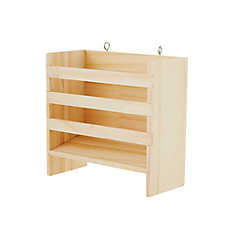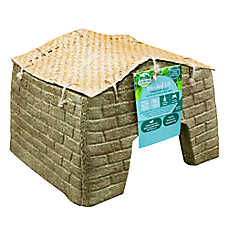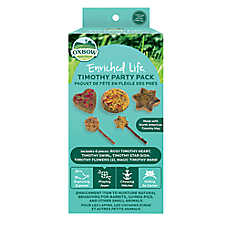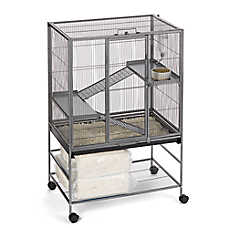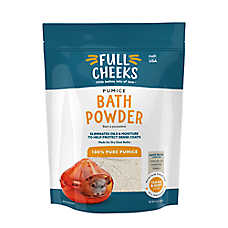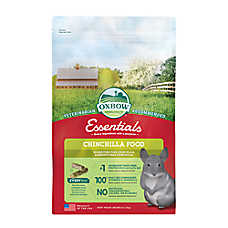Chinchilla Care Guide
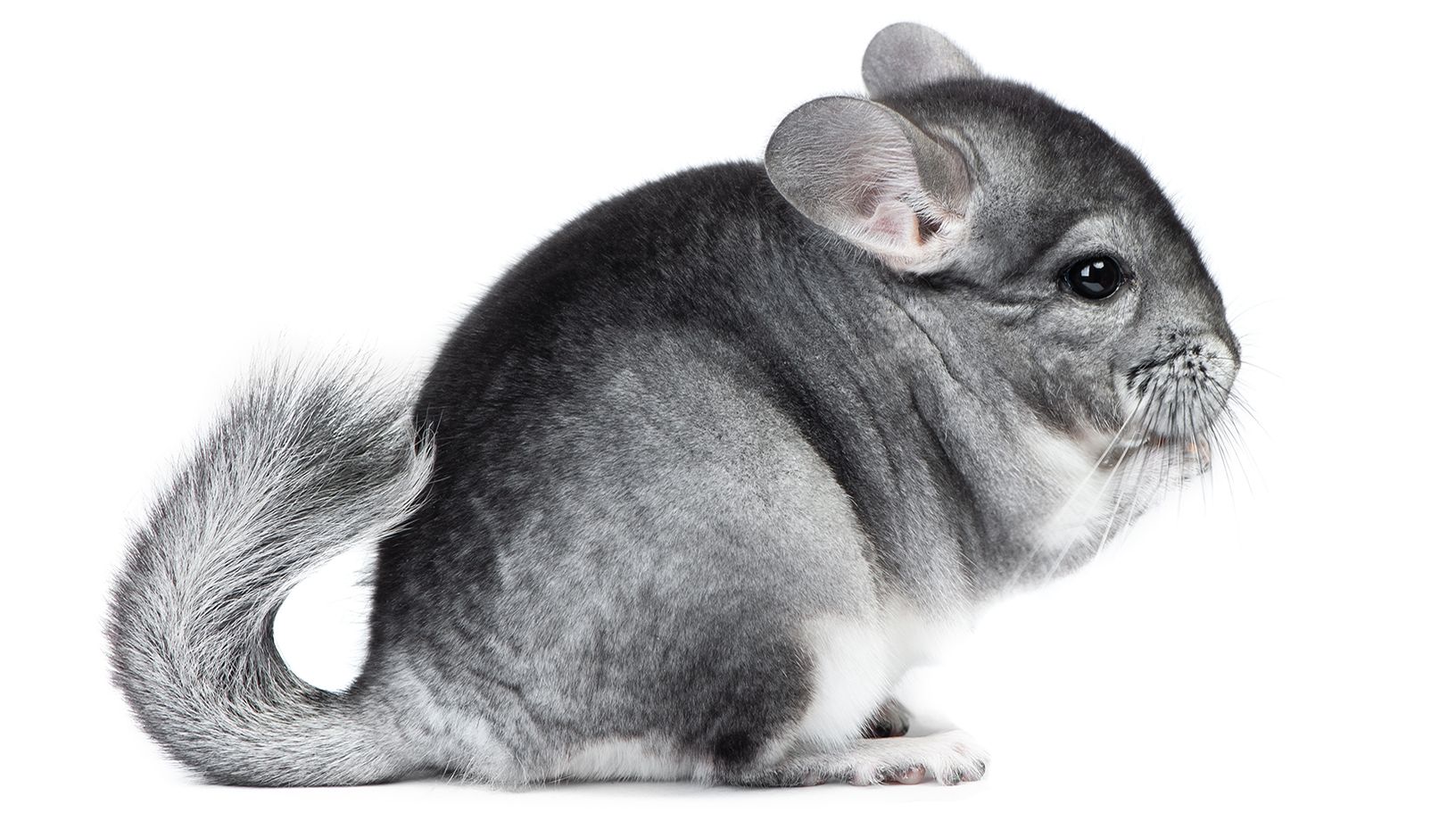
In this Article
Short, Sweet and Impossibly Soft Chinchillas!
Chinchillas are small rodents native to the Southern Andes mountains of South American. Sometimes called “chinchies,” chinchillas have some of the softest fur in the world, having 65-70 individual hairs growing out of one follicle! Their fur is very soft, and also very dense. Their fur is so dense that some common parasites, like fleas, cannot even survive on their skin! Chinchillas make good pets because they are typically quite docile and once they’re comfortable with you, they are pretty easy to handle. Some owners report that they will use their front paws to grab things, and some of them are keen to hold a variety of things like little toy umbrellas or action figure swords- talk about a pet who can accessorize!
Species Profile:
- Scientific/Common Name: Chinchilla (Chinchilla lanigera)
- Size: Chinchillas can grow to about 10-16" (25 cm-41cm) long, including the tail.
- Lifespan: Chinchillas live about 10 to 15 years.
- Behavior: They are crepuscular, meaning they are most active at dawn and dusk.
- Social: Chinchillas are social animals and do best when raised in same-sexed pairs. Males and females may live together but to avoid accidental breeding they should be spayed and/or neutered.
Handling note: When a chinchilla feels threatened, stressed, or is being too roughly handled, one natural defense mechanism they will use is to release large amounts of their fur, resulting in bald patches. This is called “fur slip,” and is similar to how porcupines release their quills. With time, your chinchilla’s fur should grow back in. To help prevent fur slip, it is important to handle your chinchilla gently. Never grab them by the fur or tail, and never scruff your chinchilla like a cat.
Setting up your Chinchilla habitat
A unique feature about chinchillas is their fur- it is incredibly soft but also exceptionally dense. If their fur gets wet, it is so dense that it does not dry very well, which can lead to health problems for your chinchilla including but not limited to skin problems, bacterial infections and fungal infections.
Instead of water baths, chinchillas take dust baths! Providing your chinchilla with bathing dust will give them enrichment as a natural way to bathe themselves, and give you some entertainment by watching them take a cute little bath.
Choosing the right enclosure
Size and setup:
- Choose a multilevel habitat or hutch at least 24 x 24 x 42.5" with a solid bottom floor
- Place the habitat out of direct sunlight in a room between 60-70°F with a relative humidity under 50%
- Chinchillas have very dense fur and temperatures over 75°F can be very dangerous
- Consider adding a chilling stone or frozen marble slab to their habitat to help keep them cool
Bedding and cleaning
Daily maintenance:
- Line the habitat with clean bedding, approximately 3" depth
- Spot clean to remove dirty bedding daily
Weekly deep cleaning:
- A full bedding change of the habitat should be done every two weeks
Habitat essentials
Food and water:
- Add a hay feeder and fill it with hay for chewing on to help maintain your chinchilla's dental health
- Hay should be available at all times
- Provide a water bottle (not a bowl) to keep your chinchilla's dense fur dry
Comfort and enrichment:
- Add a hide to the habitat so your chinchilla has somewhere to rest and feel safe
- Add wood chews and other toys for enrichment
- Include paper towel tubes to chew up and run through
- Provide recycled newspaper to play and tunnel in
Dust bath area:
- Provide a 6 x 6 x 9" area for a dust bath
- Your chinchilla should use it for 10-20 minutes, 3-4 times per week
Feeding your Chinchilla
Chinchillas are herbivorous rodents and eat mostly hay and grass, with occasional nutritional mix-ins like hibiscus. It is recommended to offer your chinchilla food in the early evening, as chinchillas eat approximately 70% of their food during the evening.
Chinchilla diet staples
Timothy hay and pellets:
- The majority of your chinchilla's diet should be Timothy hay or cat grass, and a chinchilla-formulated pellet diet
- Both should be available at all times
- Pellet food should be refreshed daily, even if the bowl isn't empty
Twice-weekly mix-ins
Flavor and nutrition boosters:
- Alfalfa hay, rose hips, and hibiscus can all be used as mix-ins to your chinchilla's food
- This adds extra nutrients and flavor to your pet's diet
- It also provides enrichment for them
Understanding chinchilla eating behaviors
Coprophagy (eating feces):
Chinchillas are coprophagic, meaning they eat their own feces. This is a normal behavior and is essential for ensuring your chinchillas are maximizing the vitamins and nutrients they absorb.
The chinchilla digestive tract is designed to do most of its actual digestion towards the end, in the large intestine and the cecum. The cecum is like a pouch attached to the large intestine and it contains beneficial bacteria that help break down the fibrous diet that chinchillas eat. This is why they're considered "hind-gut fermenters."
They then consume the fecal pellets they pass, as now that the hay has been broken down it will be much easier to absorb the vitamins and nutrients they didn't get on the first pass. Think of it similarly to how cows will eat hay, swallow it, then regurgitate it as cud and chew it again to help break it down better for digestion and nutrient absorption, this is just going the opposite direction.
Continuously growing teeth:
Many rodents, including chinchillas, have front teeth that keep growing their entire life. These are called "hypsodont" teeth and, unlike human teeth, hypsodont teeth will continually grow longer and longer.
In addition to regular feedings, chinchillas need things to gnaw on, like wood chew sticks, to keep their teeth at an appropriate length so they can chew and eat normally and without pain. If you notice your pet is having difficulty eating, you may want to have a vet evaluate their teeth to make sure they're not overgrown.
Chinchilla Hydration
Water bottle setup:
- A water bottle attached to the side of the cage should be available at all times and refreshed daily
- Chinchilla fur is very dense and shouldn't get wet, so bowls aren't ideal as there's a risk the bowl could spill and get your pet wet
When to see a vet
In addition to regularly scheduled appointments, contact your small animal veterinarian if you notice the following signs:
- not eating or drinking normally
- cloudy, sunken or swollen eyes
- overgrown front teeth or drooling, not eating
- bare patches in fur
- lethargy; weight loss
- discharge from the eyes or nose; sneezing
- diarrhea, discolored droppings or absence of droppings for more than 6-8 hours
- continuously tilted head
- Bloated Abdomen
- Labored breathing
SHOPPING CHECKLIST
- habitat sized 24” x 24” x 42.5" or larger (multilevel home preferred)
- grass hay and hay feeder
- pelleted chinchilla food
- food dish
- water bottle
- hide
- bedding
- dust bath hut and dust powder
- chilling stone
- toys & wood chews
FAQs
How often should I give my chinchilla a dust bath?
Provide a dust bath area for your chinchilla to use for 10-20 minutes, 3-4 times per week. Dust baths are essential for keeping your chinchilla's dense fur clean and healthy, as water baths can lead to health problems.
What temperature is safe for my chinchilla?
Keep your chinchilla's habitat between 60-70°F with relative humidity under 50%. Temperatures over 75°F can be very dangerous for chinchillas because of their dense fur. Consider adding a chilling stone or frozen marble slab to help keep them cool.
Can I house two chinchillas together?
Yes, chinchillas are social animals and do best when raised in same-sexed pairs. Males and females may live together but to avoid accidental breeding they should be spayed and/or neutered.
Why is my chinchilla eating its own droppings?
This is completely normal behavior called coprophagy. Chinchillas are hind-gut fermenters and need to eat their fecal pellets to maximize vitamin and nutrient absorption. Don't try to stop this behavior, it's essential for your chinchilla's health.
What should I do if my chinchilla's fur starts falling out in patches?
This is called "fur slip" and happens when a chinchilla feels threatened, stressed, or is being too roughly handled. To help prevent fur slip, handle your chinchilla gently. Never grab them by the fur or tail, and never scruff your chinchilla like a cat. With time, your chinchilla's fur should grow back in.
How do I know if my chinchilla's teeth are overgrown?
If you notice your pet is having difficulty eating, you may want to have a vet evaluate their teeth to make sure they're not overgrown. Chinchillas need things to gnaw on, like wood chew sticks, to keep their continuously growing teeth at an appropriate length.
Need other cat supplies while you’re shopping for small pets? PetSmart also carries small pet food, small pet cages, small pet treats, small pet hay, small pet litter and bedding, small pet toys and much more. Explore PetSmart’s Small Pet Shop to find everything your cat needs, all in one place.
PetSmart offers convenient shopping with Curbside Pickup or in-store pickup. Need something today? We have select items available for Same-Day Delivery in most areas powered by DoorDash. For items you purchase frequently, PetSmart has Autoship that automatically delivers the items you want to your door as often as you’d like. Check the website to see which items are eligible.
Information in this article is not intended to diagnose, treat or cure your pet and is not a substitute for veterinary care provided by a licensed veterinarian. For any medical or health-related advice concerning the care and treatment of your pet, contact your veterinarian.
©2025 PetSmart LLC Vet Assured™: Pets purchased at PetSmart are part of our exclusive Vet Assured™ program, designed by PetSmart veterinarians to help improve the health and well-being of our pets. Our vendors meet a high standard in caring for pets and screening them for common illnesses. This program also includes specific standards for in-store pet care. The PetSmart Promise: If your pet becomes ill during the initial 14-day period, or if you’re not satisfied for any reason, PetSmart will gladly replace the pet or refund the purchase price. This care guide contains general information for the proper care of your pet, but is not comprehensive and is not a substitute for veterinary advice or care. PETSMART and VET ASSURED are trademarks of PetSmart Home Office, Inc. © 2025 PetSmart. All rights reserved.
